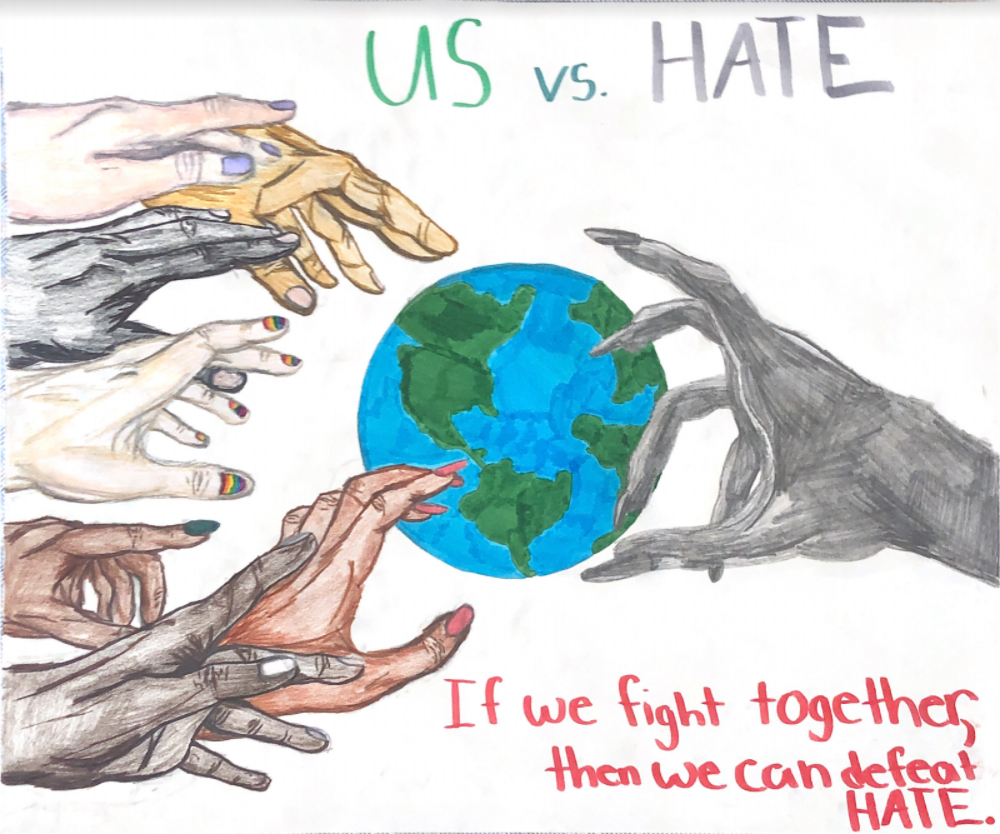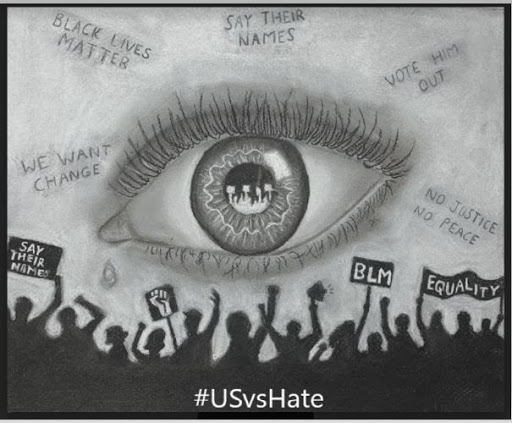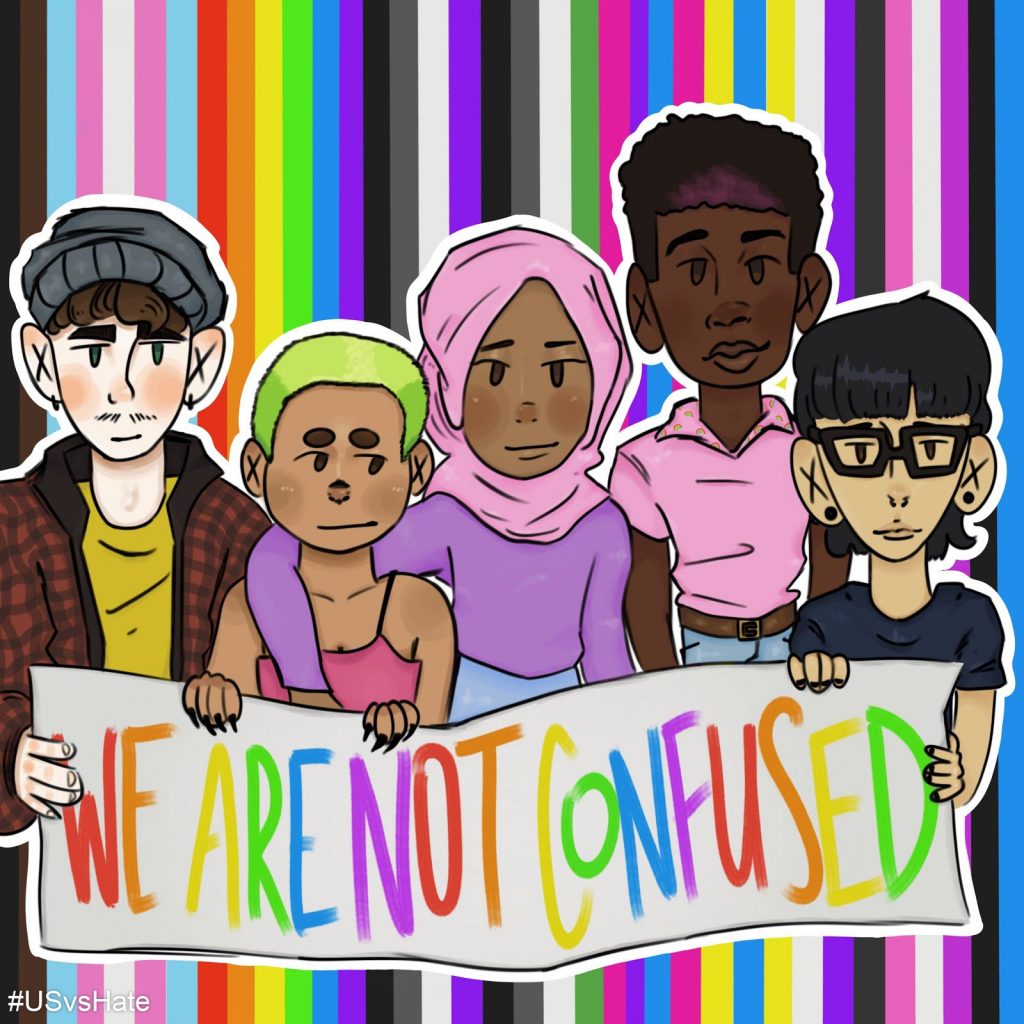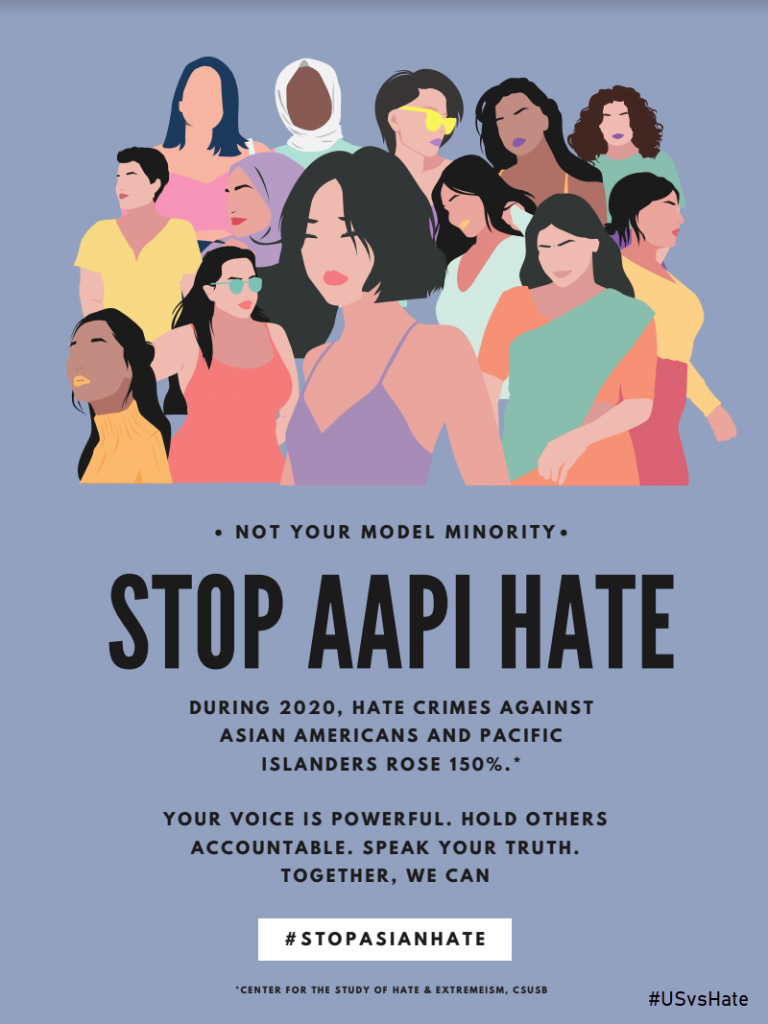Sophia, Grade 10, California
In describing the inspiration for the piece, Sophia writes, “I wanted to convey something that was real. So, I wanted to show hate as a hand that was big and dull surrounding the earth, but for us, I chose to draw multiple smaller hands showing that we can’t defeat hate alone but if we fight together we can and will win. I also wanted a hand on the “good side” to connect with everyone, so I included every race, men and women, and LGBTQ+ because that’s who we are and we’re beautiful. I wanted to prove that our differences are not for shunning, they are for celebrating. Our differences are what make us powerful, they are our superpowers.”
Jaime, Grade 11, New York
When asked about what inspired the piece, Jaime explained, “I am always inspired by the messages of other young artists and I feel it is the responsibility of all artists to express ideas that increase awareness and promote peace. I attended a rally for Black Lives Matter and was very moved by the experience.”
Jax, Grade 8, Washington
This piece was inspired by the submitter´s personal experiences. Jax explains, “As a graysexual, biromantic, transgender individual, I have experienced and witnessed unfortunate amounts of acephobia, biphobia, homophobia, and transphobia. I’ve been told that I’m confused, it’s just a phase, I’m deranged… the list is endless. I’ve had people close to me question my sanity, just because I am transgender. While finding out who you are is a confusing process, I know who I am, and I know plenty of other LGBTQIA2+ individuals who know themselves, too.”
Sara and Giana, Grade 12, California
Sara and Giana explain, “We created this product because it hit us hard during the Pandemic and the marches for BLM. We wanted people to understand what 8 minutes and 46 seconds felt like. We would like to dedicate this video to all those victim to police brutality and systematic racism in our country. We hear you and we stand with you.”
Entire class, Grade 4, Florence, AL
Teachers Argie Campbell and Jamie Pothier explain, “The Kilby 4th Grade Class of 2020-2021 used their knowledge from multiple content areas in their regular classroom along with skills from art class to complete a mixed-media project. The project was inspired by the Teaching Tolerance article featuring a curricular intervention called #USvsHate, which originated out of the University of California San Diego Center for Research on Educational Equity, Assessment and Teaching Excellence (CREATE). Kilby 4th grade students were invited by the Director of UNA’s Mitchell-West Center for Social Inclusion to create an original piece of art for the center’s new space, and #USvsHate provided the ideal framework. Students worked in their regular classroom to brainstorm artistic representations that promoted love, kindness, inclusion, respect, and positivity—based on the content learned that year. Students’ ideas included a variety of moments from history in which collaboration and togetherness overcame difference, such as key events from the Civil Rights Movement. In art class, the students collaborated with their teacher to formulate a coherent vision for the final project. From there, the two teachers determined a schedule and plan for the students to complete the project. The final project features paints matched to students’ skin tones that color two hands holding a heart together; the #USvsHate hashtag is stamped along one of the arms to look like a tattoo. In the background, students wanted “all” colors like a rainbow to represent all people coming together, and each student’s handprint is included with original messages of hope and positivity. The heart in the middle exhibits five words the students chose to particularly stand out as their ideals opposed to hate: kindness, justice, inclusion, embrace, and diversity. The project is two 5′ x 6′ canvases.”
The fourth grade students describe, “In class we are learning about Alabama history and the civil rights movement. We created an art project to show that we should love everyone and celebrate diversity.”
For a video backstory about their #USvsHate work, view here!
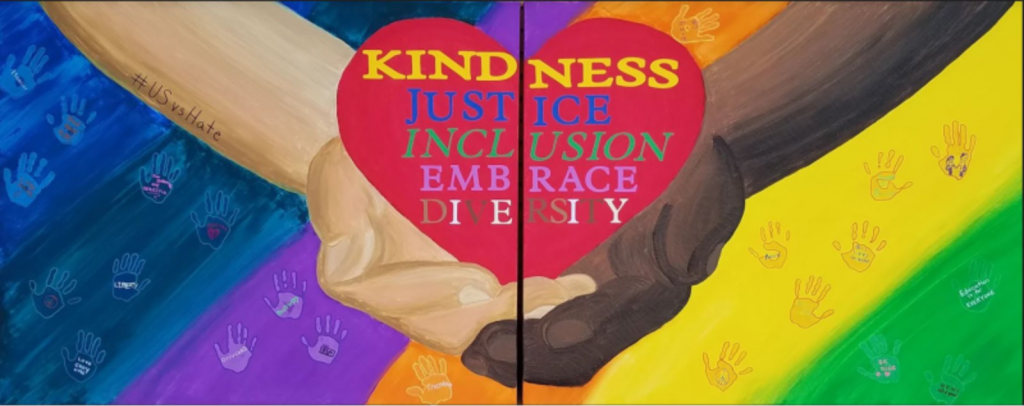
Tammy, Grade 11, San Diego, CA
Teacher Caline Nasr describes: “As a group, we learned and discussed the sociological theory of the universe of obligation. We discussed what social, political, humanitarian and environmental issues are in our universe of obligation, and how we can better spread awareness and change to the topics that mean the most to us. The following week, we discussed mental health and the social determinants of (mental) health. We discussed the stigma in our culture, communities, and families; and how that influences us and how we navigate through the world. Through these conversations, we work on liberating and empowering ourselves to speak out about the things that mean the most to us, which led us to completing #USvsHate projects, to not only express ourselves in beautiful and powerful ways, but to also amplify our voices.”
Student Tammy explains: “As a minority living in America, one of the things I noticed is the subtle racism that happens despite America being the land of freedom. As I wrote my song, I kept in mind all the acts of racism that had happened to me or people close to me. However, I believe there could be a changed America and people could learn to love one another.”
Karen, UC San Diego – Political Science: Public Policy, San Diego, CA
Karen explains, “As an Asian American, I have been frightened by the recent rise in attacks and hate crimes against Asian Americans and Pacific Islanders. Through this submission, I worked to highlight the importance of engaging in discourse and standing up for the AAPI community. I also hoped to emphasize the diversity of the AAPI panethnicity, as it is a very broad group that encompasses numerous countries of origins and racial groups of different backgrounds, income levels, education levels, and personalities. This is often a neglected fact, as people may categorize the entire AAPI community based on the stereotypes they hold. As such, I made a point to also include the “Not Your Model Minority” line, because it was important to me to note that hate against AAPI individuals (as well as all minorities) does not just consist of violent crimes, but also microaggressions, unconscious bias, and stereotyping. Finally, I wanted to specifically feature AAPI women since AAPI women have experienced hate two to three times more than men, according to the Stop AAPI Hate LA County and Georgia 12/28/20 reports.”
